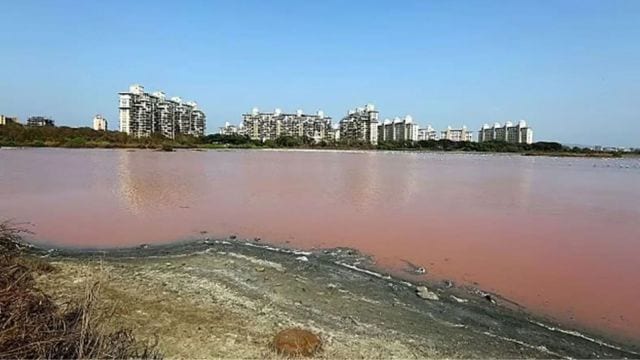Mumbai’s water stock goes below 25%, BMC to decide on implementing water cut later this week
As of May 5, the water stock in the seven lakes is 3.28 million litres, and the stock is expected to last for 60 days.
 Being an island city, Mumbai draws its water from seven lakes. (File photo)
Being an island city, Mumbai draws its water from seven lakes. (File photo)The average water stock in the seven lakes that supply drinking water to Mumbai was 22.66 per cent on Monday morning–roughly 8 per cent lower than the reading of 30 per cent taken on April 15.
However, Monday’s level was still higher than the combined water level of 17.54 per cent recorded on May 5, 2024, while the water stock stood at 23.01 per cent on the same day in 2023.
Being an island city, Mumbai draws its water from seven lakes–Tulsi, Vihar, Bhatsa, Tansa, Upper Vaitarna, Middle Vaitarna, and Modak Sagar. While two of these lakes are located within Mumbai, the rest are in the neighbouring districts of Thane, Palghar and Nashik. The catchment area of these lakes gets filled during the monsoon, and the water is transported through tunnels to the Brihanmumbai Municipal Corporation’s (BMC) filtration plant. After filtration, water is supplied to every household and commercial establishment through pipelines and reservoirs.
The seven lakes hold a total quantum of 14.4 lakh million litres of water and considering that the BMC supplies 3,850 million litres daily (MLD), the overall stock is supposed to last for 375 days. As of May 5, the water stock in the seven lakes is 3.28 million litres, and the stock is expected to last for 60 days. Officials, however, have flagged that due to rapid evaporation due to heat, the water levels are dipping faster than usual in the lakes.
“The rate at which the stock is dipping shows that the overall percentage of water stock may hover around 15 per cent by the second week of May. The rapid dipping of stock is happening due to evaporation due to a rise in temperature and considering the IMD officials have announced a rainfall alert this month for several parts of Maharashtra, we are hoping that there will be a respite, and fast evaporation may not happen,” said an official. The official also informed that the BMC will hold a review meeting this week with IMD officials to ascertain the arrival of monsoon and decide if a cut in water supply should be implemented.
“Usually, every one per cent of the overall stock leads to three days of supply. However, in the last two weeks, the stock came down by eight percentage points, which indicates that the water stock meant to last for 24 days got over in just 15 days. This is happening because of the heat, which is leading to faster evaporation, and the gap will widen when the temperature increases further as the month progresses,” the official added.
The monsoon usually arrives in Mumbai on June 15. However, over the last few years, the city has witnessed delayed monsoon onsets, with rain picking up pace only during the last week of June. More importantly, catchment areas of these lakes are located in the districts of Palghar, Thane, and Nashik, where intense rainfall begins not before the middle of July.
In the last week of March, the Maharashtra government allowed the BMC to use a reserve stock of 1.81 lakh million litres, which is expected to last roughly 48 days, considering the civic body maintains its normal quota of supply. However, if a water cut is imposed, the stock may last for a few more weeks.







